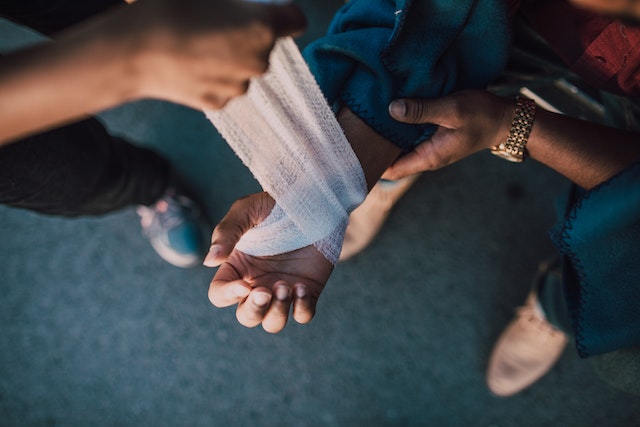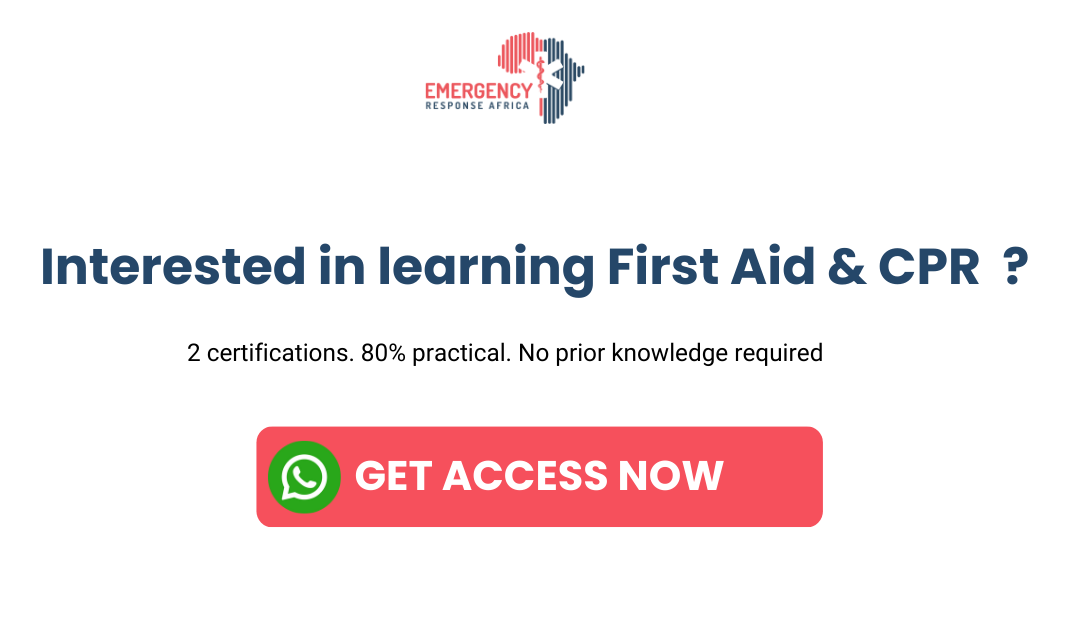Being a first aider is not just about knowing what to do in a medical emergency. It also requires having the right qualities to handle stressful situations calmly and effectively.
These qualities ensure that first aiders are not only capable of providing medical assistance but also of helping people feel safe and supported during a crisis. Here, we will explore the most important qualities a good first aider should have.
Qualities of a Good First Aider
The qualities a good first aider should have include;
1. Quick Response
One of the key qualities of a good first aider is the ability to respond quickly to an emergency. In situations where every second counts, a first aider must act fast. This doesn’t mean rushing without thinking, but rather making decisions quickly and confidently. A quick response can prevent further harm and sometimes save a life.
For example, if someone is choking, a fast and correct response could clear the airway and allow the person to breathe again. Delaying action in such situations can have serious consequences.
2. Staying Calm Under Pressure
Emergencies can be chaotic and stressful. A good first aider must be able to stay calm in these situations. Keeping a level head helps not only the first aider but also those around them. If the first aider is calm, it reassures the injured person and bystanders, reducing panic.
Staying calm allows the first aider to think clearly and make better decisions. Panicking can lead to mistakes or worsen the situation, which is why being composed is so important.
3. Clear Communication
Communication is one of the most essential skills a first aider needs. When dealing with an injured person, it’s important to speak clearly and calmly.
The injured person may be scared or in pain, so a first aider must use simple, direct language to explain what’s happening and what they are doing to help.
Additionally, a first aider needs to communicate with others at the scene, such as bystanders or coworkers. They may need to ask for help or gather information about how the injury occurred.
Being able to give clear instructions is also important when emergency services arrive, as the first aider will need to explain the situation to them.
4. Empathy and Compassion
Another quality a good first aider must have is empathy and compassion for the injured person. Injuries and emergencies can be scary, and the injured person may be in pain or shock. Being kind and understanding helps to calm them down and makes them feel cared for.
Showing compassion means that the first aider listens to the person’s concerns, reassures them, and provides comfort as much as possible. It’s not just about treating the injury; it’s about making the person feel supported during a difficult time.
5. Good Observation Skills
Observation is a critical part of being a good first aider. Before taking any action, the first aider needs to assess the situation. This means looking around to see what caused the injury and determining the risks to the injured person and others.
For example, if someone falls, a first aider must check whether the environment is safe before helping the person. Is there broken glass nearby? Is the area slippery? Noticing these details can help prevent further injuries and ensure that the first aider handles the situation safely.
6. Confidence
Confidence is another important quality of a good first aider. Being confident in your skills means that you can act without hesitation, even in a high-pressure situation. Confidence inspires trust, which is important because the injured person and others will look to the first aider for help.
A confident first aider can stay focused on their tasks, even if things seem overwhelming. It’s natural to feel nervous in an emergency, but a good first aider knows how to rely on their training and skills to handle the situation calmly.
RELATED SERVICES
7. Ability to Work as Part of a Team
First aiders often work with others during emergencies. Whether it’s coordinating with coworkers, bystanders, or emergency services, being able to work as part of a team is essential. A first aider needs to know when to take charge and when to rely on others for support.
In some cases, a first aider may need to ask someone to fetch supplies, call for help, or assist with moving the injured person. Being a good team player means knowing how to give clear instructions and ensuring everyone is working together effectively.
8. Knowledge of Their Limits
Even though a first aider is trained to handle emergencies, they must know their limits. It’s important to recognize when a situation is too serious to handle alone and when professional medical help is needed. Trying to do too much or going beyond one’s knowledge and skills can make things worse.
A good first aider knows when to call for help and understands that they are there to provide initial care, not replace emergency medical services. Knowing your limits and getting help when needed is a sign of good judgment.
9, Leadership Skills
During an emergency, people often look to the first aider for guidance. A good first aider should be able to take charge of the situation and lead others in a calm and organized way.
This could involve directing people to move out of harm’s way, instructing someone to call for help, or organizing bystanders to assist with first aid.
Leadership doesn’t mean doing everything alone; it means guiding others and keeping everyone focused on the task at hand. In some cases, a first aider may also need to manage a crowd or keep onlookers calm.
10. Physical Fitness
Being physically fit is another important quality for a first aider. In some emergencies, first aiders may need to move quickly, lift or carry someone, or perform physically demanding tasks like chest compressions during CPR.
A first aider doesn’t need to be an athlete, but they should have enough physical strength and stamina to handle these tasks if needed. Good fitness can make the difference in how effectively a first aider can respond to certain situations.
11. Continuous Learning and Practice
First aid skills need to be practiced regularly to stay sharp. A good first aider understands the importance of ongoing training and staying up-to-date with the latest first aid techniques. Many first aid courses offer refresher training, and it’s important for first aiders to take advantage of these opportunities.
Additionally, first aiders should be aware of new developments in medical care and be willing to learn new skills. The more a first aider knows, the more effective they will be in an emergency.
12. Respect for Privacy and Dignity
A good first aider should always respect the injured person’s privacy and dignity. This means treating them with respect, keeping their condition confidential, and ensuring that they are as comfortable as possible.
For example, if a person is injured in public, a first aider should try to protect their privacy by keeping onlookers at a distance and speaking to the injured person quietly. Respecting the person’s dignity helps them feel safe and supported during a difficult time.

What Are the Three Primary Duties of A First Aider?
The three main duties of a first aider, known as ‘PPP’, are:
- Preserve Life: The first aider’s priority is to keep the injured or ill person alive.
- Prevent Deterioration: They take action to stop the situation from getting worse.
- Promote Recovery: The first aider helps the person recover by providing basic care until professional medical help arrives.
Conclusion
Being a first aider is a role that requires much more than medical knowledge. It involves having the right qualities, such as quick thinking, empathy, confidence, and good communication skills.
By having these qualities, a first aider can handle difficult situations calmly and effectively, ensuring that the injured person gets the best possible care until professional help arrives.



